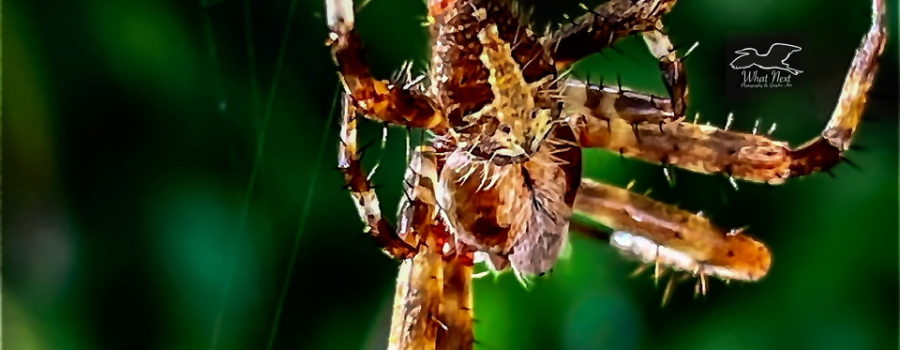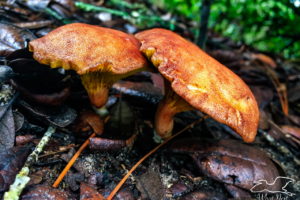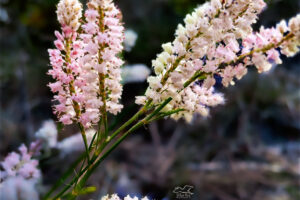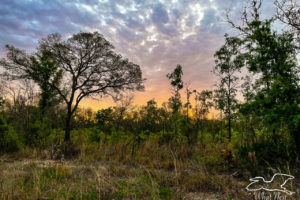The Spotted Orb Weaver Has an Interesting Nocturnal Lifestyle

Early last week I decided that I wanted to get some photos of the mimosa trees that are now heavy with seed pods. The pods are very pretty, bright green and hang in bunches off of the trees. They aren’t quite as striking as the flowers, but they still look pretty nice. Before long they will start to turn brown and drop off the trees into the surrounding soil. Of course, when I go somewhere to photograph one thing I almost always wander around and look for other things to take pictures of as well. On that particular afternoon, I was very successful, finding several other species, including a new type of orb weaver that I had not seen before. I knew it was an orb weaver based on the web structure, but I did not recognize the spider in the web. When I got home and researched it, I realized why. This spider was a spotted orb weaver (Neoscona crucifera), also often known as the Hentz orb weaver (after Nicholas Hentz) or the barn spider (along with several other species), and it tends to be nocturnal.

This beautifully marked spider has a white to cream colored cross-like marking on the top of it’s abdomen and two white spots on the underside. The colors can range from barely visible to very distinct, and they can look quite similar to the red-femured spotted orb weaver (Neoscona domiciliorum). Both can be found in this area, but the red-femured spotted orb weaver has more distinct markings, brighter reddish to orangish coloration, and bright red coloring on the first segments of the legs. Our spotted orb weaver can be found from Maine to Florida along the east coast of the United States and as far west as Minnesota and Arizona. They can also be found in coastal southern California and Mexico. Habitats where they can be found include moist woods, gardens, fields, and near human structures, especially under building eaves.

Even though these spiders often live near us, many people never notice them because of their nocturnal lifestyle. Females usually come out at dusk and begin spinning their webs which can be very elaborate and up to two feet across. The webs are very effective at catching small flying insects like moths, mosquitos, flies. As the sun comes up, the spider will eat the silk of her web and hide in the eaves or wrap herself in a leaf that she keeps closed with strands of silk. It is believed that the spider gains nutrients from eating the silk and also moisture by ingesting the dew on the silk strands. Male spotted orb weavers don’t spin webs at all, but instead rob the webs of their mates. Towards the end of the summer to early fall the female will lay her eggs in an egg sac wrapped in leaves. As she nears laying time (late July and August) she will sometimes stay in her web, even during the day in order to catch more prey to meet her increased nutritional needs. I’m sure that is what this particular spider was doing because it was her activity in the web that attracted my attention. She was very alert, paying close attention to any movements of the web. I count myself lucky to have spotted her and gotten the chance to photograph her. From now on, I will try to be more alert to what is happening under my eaves when I go out at night.






Recent Comments